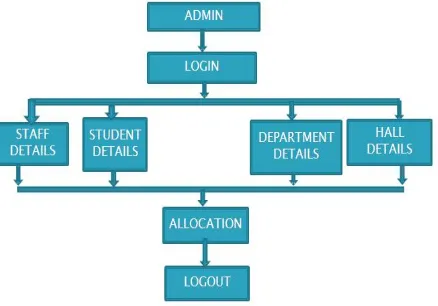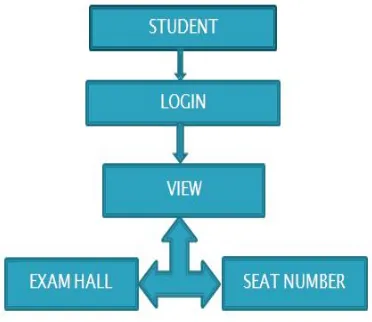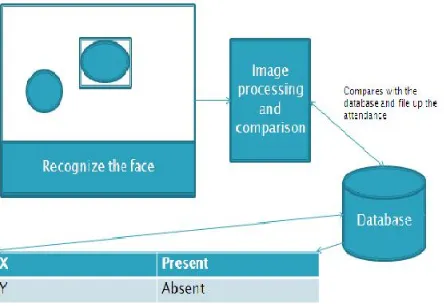Automation of Hall Seating Arrangement
System
R.Chandrasekar1, B.Manoj Kumar2, R.Naveen Selvakumar2, R.Tharane Krishna2
Department of Computer Science and Engineering, V.S.B. College of Engineering Technical Campus, coimbatore,
TamilNadu, India
Department of Computer Science and Engineering, V.S.B. College of Engineering Technical Campus, coimbatore,
TamilNadu, India
Department of Computer Science and Engineering, V.S.B. College of Engineering Technical Campus, coimbatore,
TamilNadu, India
Department of Computer Science and Engineering, V.S.B. College of Engineering Technical Campus, coimbatore,
TamilNadu, India
ABSTRACT: Exam hall seating allocation is one of the major concerns in quality education. When the number of students, subjects, departments and rooms gets increased exam hall seating management becomes complex. Maintaining a decent exam environment with the proper seating arrangement is one of the difficult jobs for the institutions. This project provides solution to exam seating arrangement problems that can be achieved through the execution of proposed chromatic polynomial algorithm. This project provides solution for preventing some exam hall plagiarisms by arranging seats for large number of students and it also finds out the best combination of rooms to be assigned for the exam to organize perfect seating based on the capacity of the exam hall, number of students, differentiation of subjects. It provides better hall seating plan than the manual system used by the institutions. The project maintains various details in modules such as Students Details, Staff Details, and Hall Details with proper descriptions. It also has some features to generate reports for absentee’s list using image processing.
KEYWORDS: Exam; Seating Plan; Seat Allocation; Algorithm
I. INTRODUCTION
The proposed system is a web based application that is designed to manage and handle the operations in an educational institute during the time of examinations. It is an application that can be used by all the students and staff in an educational institute in order to facilitate the communication among them. The application is easily adaptable as it is used on a desktop systems and laptops.
The project maintains various details in modules such as Students Details, Staff Details, and Hall Details with proper descriptions. Most of the important processes in an educational institute are carried out manually such as teaching ,student information and number of halls available for the examination as all these process is done manually it increase the work load and easily prone to errors. The current systems are traditional systems which support manual processes leading to an immense time consumption and pile of hard copies. Existing system is inefficient, ineffective and less accurate, in such a situations report generation is not an simple task also if report is generated calculations has to be done manually which may results in errors.
The project also includes image processing by which the attendance reports of the students are generated. This consumes less time and manual work is not required.
II. PROPOSED SYSTEM
This system is user friendly for the retrieval and Storing of data. And it is fast to store the data. It is Maintained efficiently. The graphical user interface is implemented in this proposed system. It is more efficient than existing system Reports like seating arrangements can be easily generated in this proposed system by that user can generate the report as per the need and their wish for the duration of month or the day but not in the middle of the session. The proposed system requires very less paper work. All the data is entered into the computer instantly and reports can be generated by the help of computers. So that work will become very easy because there is no need to keep data on more papers. Computer operator control is available so rate of errors will be less. Storing and retrieving of information is simple. So work can be done at correct time and also good in speed. The Image Processing feature in the project helps for maintaining the attendance in a easier way. The Image Processing is done by using camera which recognizes the face of the students. The comparison is done once the face of the student is recognized. The recognized face is compared with database of the students, if both are matched then the attendance of the student is considered as present. With the help of Image Processing technique the malpractices during the exams will be reduced. Image Processing provides an easier way of attendance report generation. The Database of the student details such as register number, department and year are maintained. To overcome existing system to avoid waste of time and tension. Student searches their register number and they getting respective exam hall details in the mobile application at anywhere using the computer systems
ADVANTAGES
Easy to handle and operate.
Friendly interface.
Fast and convenient.
Less human effort.
Easy to update.
Easy message passing.
Smart way of communication
SYSTEM ARCHITECTURE
Fig. 1 Architecture Diagram
IV. MODULE DESCRIPTION
Registration Module
In this module the student can register by providing necessary details such as register number, department and year
Admin module
Here admin has to login by using their unique username and password. Admin is the only permit person to access this module for security purpose. So other users don’t get rights to access this module for their purpose
Room Module
In this module Admin can update the necessary details for generating seating arrangement. The details to be specified includes room numbers, the capacity of the rooms, the number of students, their department and year.
Fig. 3.Room Module
Student Module
In this module the students can then login and view the allotted hall number and seat number during the examinations.
Faculty Module
In this module the faculties can sign up by providing the necessary details. The faculties can then login and view the allotted hall number and session
Fig. 5. Faculty Module
Attendance Module
In this module the attendance management is simplified by using the image processing. The student attendance will be marked as present if recognized face is matched with the face in the face in the student database
V. CONCLUSIONS
Ultimately the output of the project reduces the manpower, workload on students as well as staff. It benefits all the institutes by reducing the complexity involved while allocating the exam duty for the staff, examination rooms for the students. All these data is load in a centralized database which can be accessed whenever needed. It also provides greater accurateness, pronounced service and also minimizes manual work and time dissipation
REFERENCES
[1]S. Priya Dharshini,” M. Selva Sudha, Mrs.V.Anithalakshmi, “Exam Cell Automation System, International Journal of Engineering Science and Computing (2017), Volume 7, Issue no3.
[2]Dayanand” G Savakar, Ravi Hosur, “Automation of Examination System , International Journal of Science and Research, Volume 4 Issue 11 November 2015.
[3]Bondre Rutuja Avinash,“ Durgi Varsha Vijaykumar, Mohite Pradnesh” Rajeev, Parkar Vishal V, Automated Examination Support System International Journal of Current Engineering and Technology.
[4]S. S. Aravinth,” G.“Pavithra, M. Myvizhimalar, D. Divya, M.Rathinakrithika, EXAM HALL SEATING ARRANGEMENT SYSTEM USING PHP, International Journal of Innovative Research and Technology, 2014
[5]Ashti Fatima Alam, “Seating arrangement Tools for examinations”, International Journal of Engineering Applied Science and Technology VOL:1 2016.
[6]S.Vasupongayya, W.Noodam, and P.Kongyong, “Developing Examination Management System: Senior Capstone Project, a Case Study,” World Academy of Science, Engering and Technology, Vol:7 2013.


